Intel Haswell-EP Xeon 14 Core Review: E5-2695 V3 and E5-2697 V3
by Ian Cutress on November 20, 2014 10:00 AM ESTCPU Benchmarks
The dynamics of CPU Turbo modes, both Intel and AMD, can cause concern during environments with a variable threaded workload. There is also an added issue of the motherboard remaining consistent, depending on how the motherboard manufacturer wants to add in their own boosting technologies over the ones that Intel would prefer they used. In order to remain consistent, we implement an OS-level unique high performance mode on all the CPUs we test which should override any motherboard manufacturer performance mode.
HandBrake v0.9.9: link
For HandBrake, we take two videos (a 2h20 640x266 DVD rip and a 10min double UHD 3840x4320 animation short) and convert them to x264 format in an MP4 container. Results are given in terms of the frames per second processed, and HandBrake uses as many threads as possible.

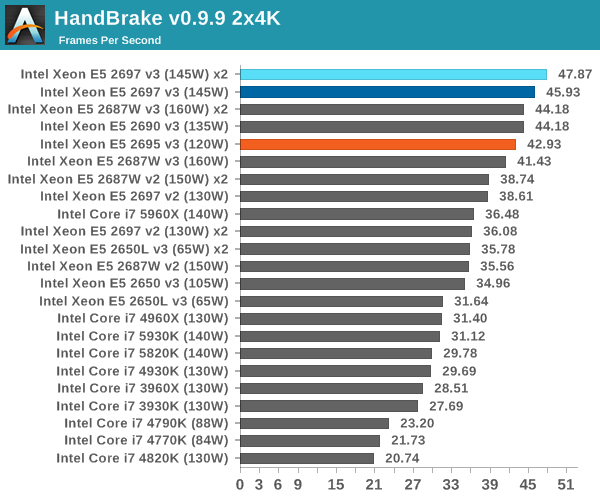
Dolphin Benchmark: link
Many emulators are often bound by single thread CPU performance, and general reports tended to suggest that Haswell provided a significant boost to emulator performance. This benchmark runs a Wii program that raytraces a complex 3D scene inside the Dolphin Wii emulator. Performance on this benchmark is a good proxy of the speed of Dolphin CPU emulation, which is an intensive single core task using most aspects of a CPU. Results are given in minutes, where the Wii itself scores 17.53 minutes.
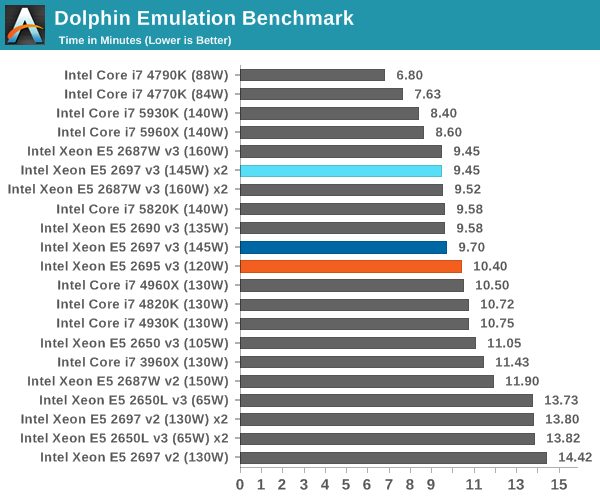
WinRAR 5.0.1: link
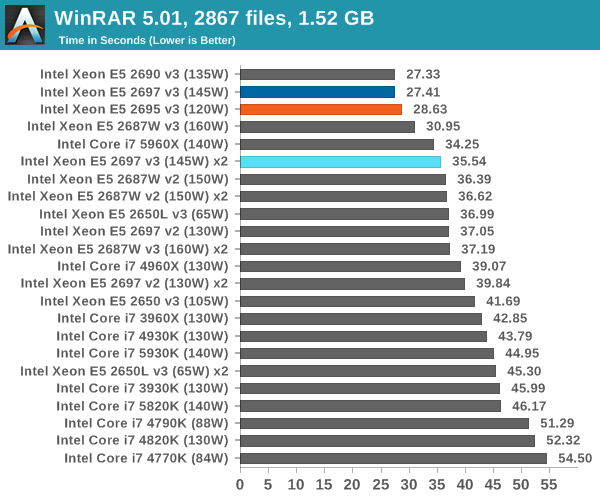
PCMark8 v2 OpenCL
A new addition to our CPU testing suite is PCMark8 v2, where we test the Work 2.0 and Creative 3.0 suites in OpenCL mode.
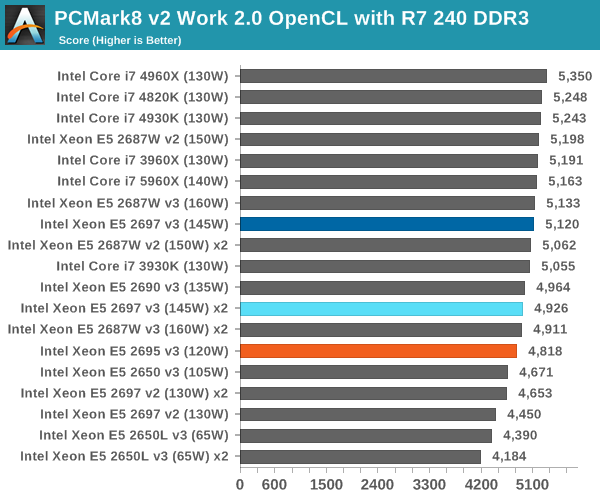
Hybrid x265
Hybrid is a new benchmark, where we take a 4K 1500 frame video and convert it into an x265 format without audio. Results are given in frames per second.
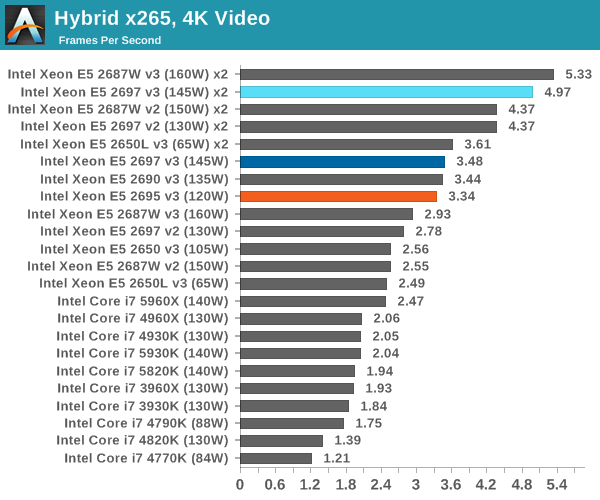
3D Particle Movement
3DPM is a self-penned benchmark, taking basic 3D movement algorithms used in Brownian Motion simulations and testing them for speed. High floating point performance, MHz and IPC wins in the single thread version, whereas the multithread version has to handle the threads and loves more cores.
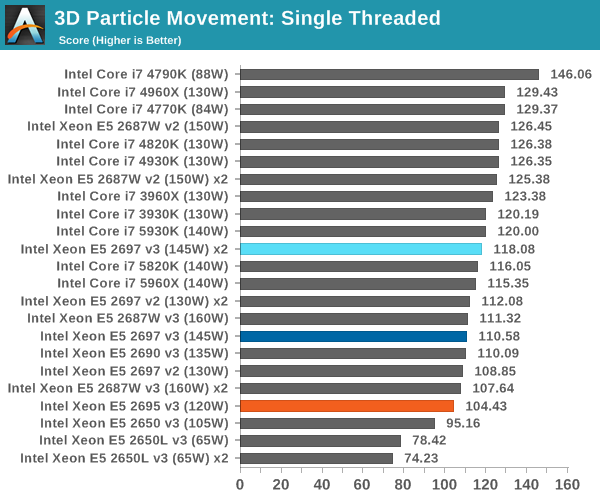
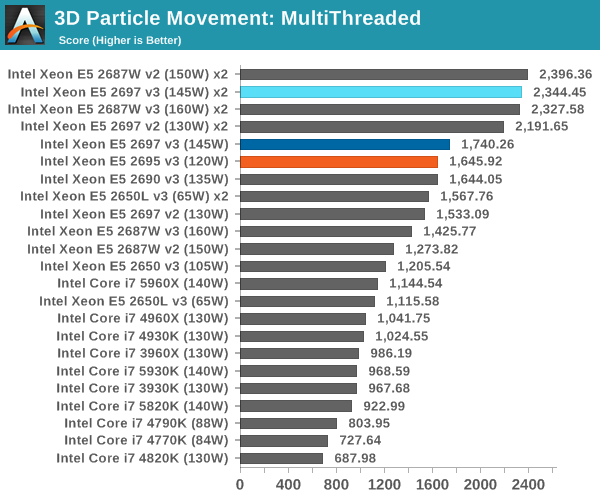
FastStone Image Viewer 4.9
FastStone is the program I use to perform quick or bulk actions on images, such as resizing, adjusting for color and cropping. In our test we take a series of 170 images in various sizes and formats and convert them all into 640x480 .gif files, maintaining the aspect ratio. FastStone does not use multithreading for this test, and results are given in seconds.

Web Benchmarks
On the lower end processors, general usability is a big factor of experience, especially as we move into the HTML5 era of web browsing. For our web benchmarks, we take four well known tests with Chrome 35 as a consistent browser.
Sunspider 1.0.2
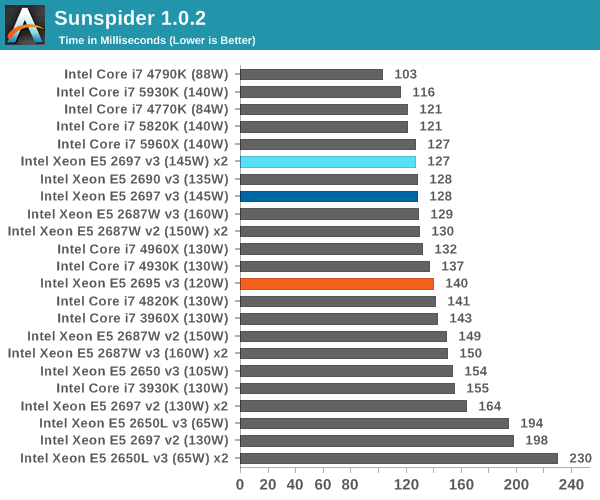
Mozilla Kraken 1.1

WebXPRT

Google Octane v2
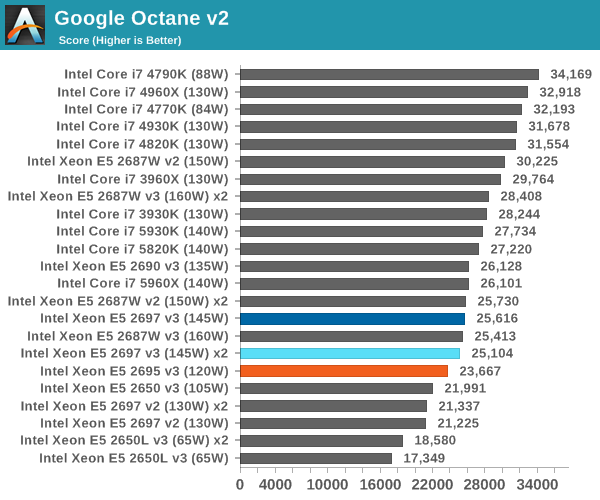










44 Comments
View All Comments
Wolfpup - Tuesday, November 25, 2014 - link
This is awesome :-D I'll never get to touch one of these, even at work, but it's still ridiculous fun to read about them, much less see game benchmarks on them.(Imagine a game actually designed for 18 Haswell cores LOL)
I'd loooove to run Folding @ Home across that many cores!
daresystem - Monday, December 15, 2014 - link
It's interesting, I am actually system builder, so this information is very useful for me. Why you didn't benchmark it with VMWare? I've been using S2600CP for entire my client for year, and I just curious with the performance this processor in real Server usage.Thank you.
jackdgalloway - Friday, June 12, 2015 - link
Regarding the "snoop mode". I got two dual socket, Intel(R) Xeon(R) CPU E5-2697 v3 boxes and found them performing 15% slower on a finite element code than the previous generation dual socket Intel(R) Xeon(R) CPU E5-2697 v2 boxes we had. After much investigation I found the snoop mode was set to early snoop, changing to "cluster on die" sped up the FEA simulation immensely, with that one change the box then outperforming the V2 counterpart by 25%. This was great, however I'm still encountering one problem. I have a monte carlo particle transport code (not a matrix dominant code) whose performance was unaffected by this change, and is still 50% slower than the v2 counterpart. All that said, any intuition on why might be and either troubleshooting thoughts, architecture differences that could cause this, or any other BIOS settings to try?lucien_br - Sunday, March 5, 2017 - link
Xeon V3 with actual game BF1:https://www.youtube.com/watch?v=Faae3_Tdtfw